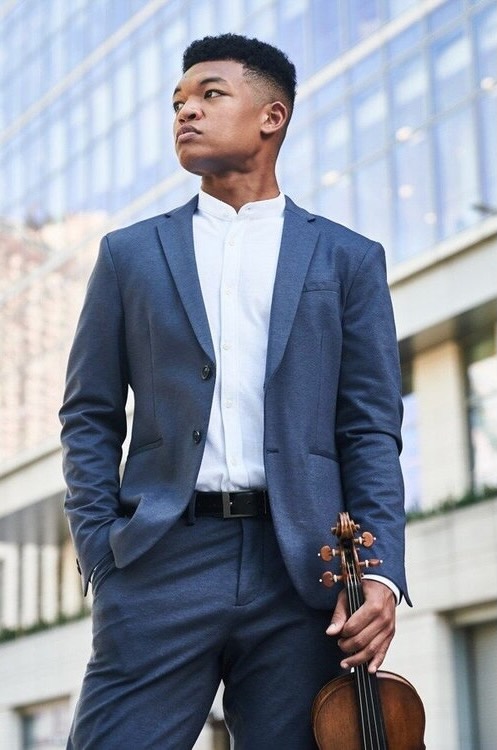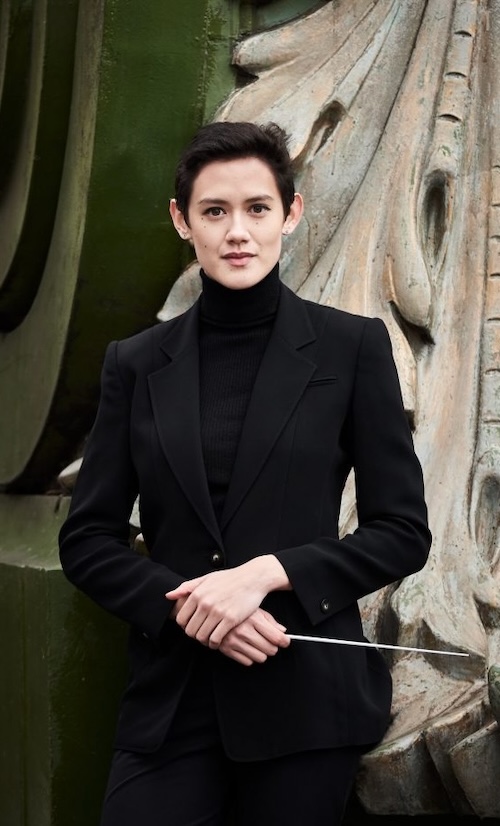Goosby delivers warm advocacy for Price in Utah Symphony’s American program

This weekend’s Utah Symphony program puts the spotlight on 20th-century American composers. The concert features works by Samuel Barber, George Gershwin and Leonard Bernstein, as well as the Utah premieres of two works by Florence Price.
Price, who died in 1953, has seen a remarkable revival of her music ever since a large collection of her manuscripts were discovered in 2009 in her former summer home in Illinois. As a composer Price ranks with Amy Beach, another 20th century American female composer whose music deserves to be performed regularly. Both are fine composers writing in a predominantly rich romantic idiom.
A strong champion of Price’s music is 28-year-old violinist Randall Goosby, who was the soloist Friday night in her Violin Concerto No. 2 and the brief, hymn-like Adoration. Goosby has recorded both works (as well as her Violin Concerto No. 1), and his affection and admiration of her music was evident at Friday’s performance.
The Second Violin Concerto is in a single movement with four distinct sections. Predominantly romantic in its musical language, Goosby made the most of the luxuriant romantic harmonies with effusive playing that fully underscored the lush melodicism of the work. Rather than an overly virtuosic showpiece for the soloist Price relies on lyricism to convey her musical expressions, with a few notable excursions into more robust passages and playful, lighthearted moments.
Guest conductor Stephanie Childress offered sensitive accompaniment to the soloist, allowing Goosby to stand out and never letting the orchestra overpower him.
This fine collaboration was also present in Price’s Adoration. Originally written for organ, the five-minute piece has been arranged for various instrumental combinations, including the evening’s version for violin and orchestra. A beautifully melodic piece, Goosby coaxed a full, warm sound from his instrument that brought out the work’s charming lyricism.
Goosby also treated the audience to an encore, Coleridge-Taylor Perkinson’s “Jettin’ Blue/s,” from his three-movement work for solo violin Blue/s Forms. A virtuosic piece, Goosby gave an exhilarating account that highlighted the carefree, high spirited character of the music.
The concert opened with Barber’s Second Essay. Childress led the orchestra in a dynamic reading that brought cohesiveness to the piece’s multi-faceted form that ranges from somber lyricism to dissonant outbursts to chorale-like passages.
A concert of American music certainly wouldn’t be complete without a work by Gershwin, and the second half fittingly opened with his iconic An American in Paris. The 25-year-old conductor, who is rapidly making a name for herself on both sides of the Atlantic, opened the piece with a brisk tempo that captured the perky exuberance of the music. She elicited crisp playing from the orchestra with her decisive direction. Childress also brought sensitivity to the bluesy sections and a swinging sassiness to the more extroverted jazzy moments in the score. Overall, it was a boldly directed performance that worked well in this piece.
The concert concluded with Bernstein’s Symphonic Dances from West Side Story. Arguably the composer’s best work for either stage or concert hall, the music is filled with the musical’s catchy tunes, infectious rhythms and relentless energy. Childress was excellent in bringing all this to life. In her hands she gave the audience a tumultuous ride in the Mambo and Rumble sections, a mellow vibe in “Somewhere” and bluesy in the “Cool” fugue.
Since this is a “Masterworks Magnified” concert, the Utah Symphony’s vice president of education and community engagement Ben Kipp was on hand. After the Barber he spoke with Katie Nelson who runs the podcast “What’s Her Name” and who briefly discussed Price’s music. Before the second half began Kipp spoke with percussionist Eric Hopkins and asked him to demonstrate the array of percussion instruments employed for this concert.
Whether or not these “Masterworks Magnified” events enhance the concert experience for the audience is debatable. On Friday night it mainly served to disrupt the flow and rhythm of the program.
The Utah Symphony program will be repeated 5:30 p.m. Saturday. utahsymphony.org
